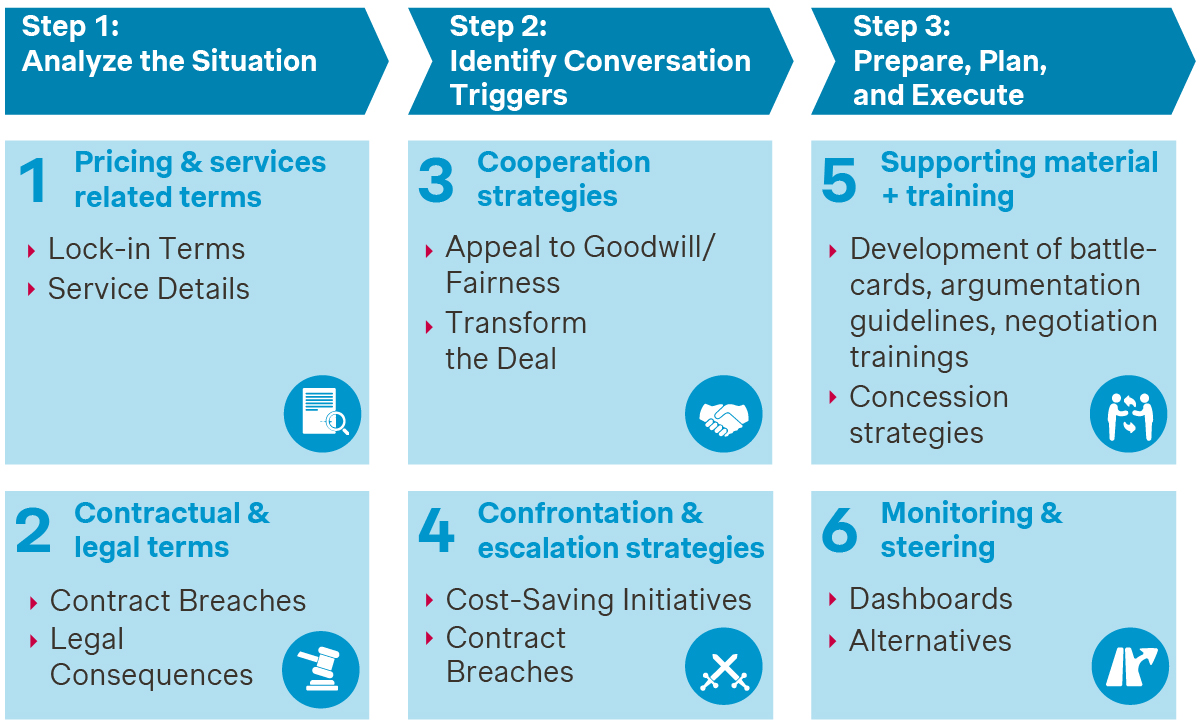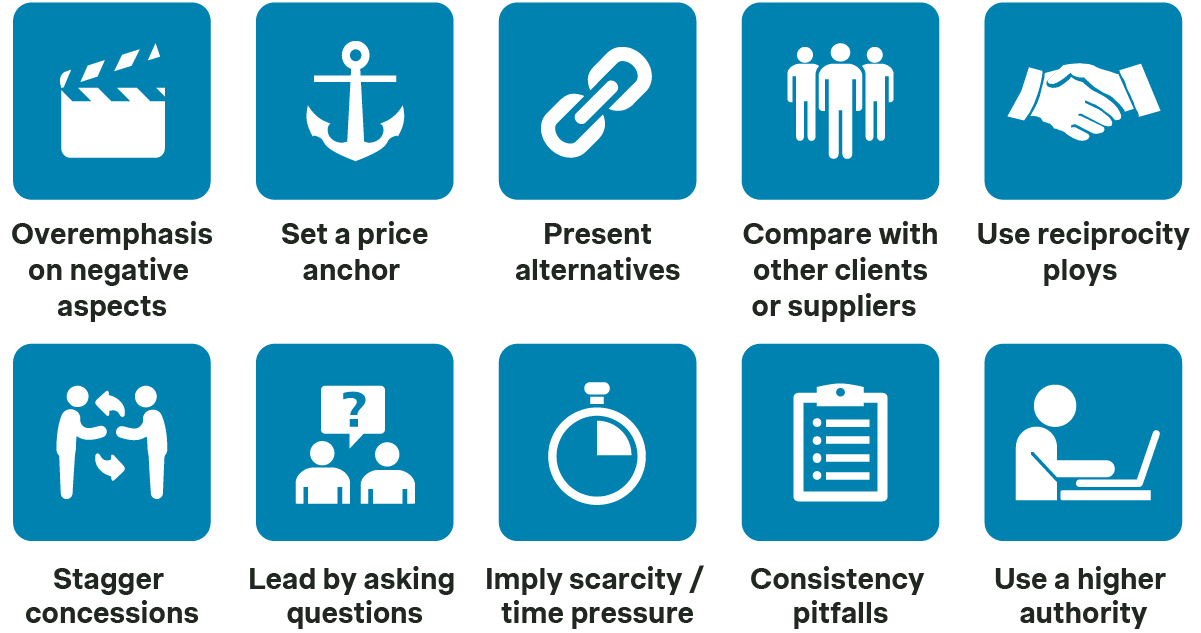Fixed (locked) contracts often provide substantial benefits to both parties. For one party, they promise stability and a trusted partner. For the other, they guarantee predictable business and revenue. This is the essence of fixed contracts – an arrangement that works smoothly in a steady world. But what happens when the world becomes anything but steady?
Consider the story of an aerospace maintenance and repair supplier. Locked into 5- to 10-year agreements with airlines, their contracts included a seemingly modest 2% annual price increase. It was a win-win—until turbulence hit. Between 2022 and 2023, the supplier found itself facing unanticipated annual cost surges of 8% to 10%. Skyrocketing material prices, soaring energy bills, increased labor costs, and spiraling transportation expenses left their carefully planned margins grounded. What once felt like a fair compromise now felt like a trap.
This tale underscores a universal truth: even the best-laid contracts are vulnerable to the chaos of a volatile world. The challenge of price management within locked contracts isn’t just about weathering storms—it’s about finding ways to steer through them while maintaining trust and partnership. So, how can companies manage deals that are no longer as favorable but in which they remain locked?
In this situation, we recommend following the following three steps:

Step 1: Analyze the situation
The optimal approach and sequence of actions will heavily depend on the situation. Key factors to consider during your status quo assessment include:
Lock-in terms: What are the exact terms that enforce the lock-in? Is the duration or volume fixed? How detailed are the contract clauses? Are there exits like force majeure, or potential loopholes?
Implications of the lock-in: How severe is the current situation? Are you slightly missing margin expectations, or actively burning cash? How damaging would it be to do nothing? Is this a minor hit to your quarter’s P&L, or is the entire business at risk?
Clarity of service details: How precisely are the deliverables described in the contract? Does the contract allow for alternative methods of service delivery? Does it accurately reflect the current reality of service delivery?
Customer contract breaches: Has the customer breached the contract in any way? Were payments made late? Did they fail to cooperate or fall short on promised volumes? Was the deal made under false pretenses?
Legal consequences: What are the repercussions if the contract is broken? Are there pre-defined penalties? Could breaking the contract risk your relationship with other, more favorable customers?
A detailed analysis of costs captured in the increase terms enables you to identify leakages and risks:

Step 2: Identify conversation triggers
Strategies to improve a locked contract range from cooperative to aggressive approaches. Here are some potential triggers to initiate discussions with the customer:
Cooperation strategies:
Appeal to goodwill/fairness: Sales is often built on trust and relationships. Sometimes both parties need to benefit for the deal to remain viable in the long run. Consider reaching out to your counterpart and explaining how circumstances have changed since the contract was signed, and why price adjustments may be necessary to maintain fairness, even if the contract officially does not allow for it. For instance, a 50/50 cost increase sharing between you and the customer.
Transform the deal: Look for ways to create a win-win scenario. This could mean increasing volume commitments or switching to alternative pricing models, like performance-based pricing, where both sides could benefit. For instance, provide your customer a shorter turnaround time in exchange for them absorbing the cost increase.
Negotiation and confrontation strategies:
Cost-saving initiatives: Explore ways to reduce service delivery costs. Can automation replace personnel? Can cheaper materials be used? Be sure to check if the contract allows for these changes or if they require approval from the other party. For instance, can orders be combined to alleviate some of the transportation costs?
Monetize or eliminate out-of-scope services: In many contracts, extra services are provided that aren’t technically part of the agreement. Consider charging for these extras or eliminating them if they’re not contractually required. For instance, start charging for the frequent onsite support that has been requested by the customer but is not part of the contract.
Negotiate the price increase clause formula: In multiple industries, price increase clauses are defined based on a combination of costs indexes. Those price increase formulas provide multiple negotiation levers. For instance, negotiate the weight of each cost factor (energy vs. material), the index used, and the capping of the yearly increase.
Escalation strategies:
Call out contract breaches: Collect and document any past breaches by the other party, such as late payments or failure to meet obligations. Use these as leverage to open negotiations. For instance, minimum order volume not fulfilled by the customer.
Head-on confrontation: If all else fails, you may need to escalate the situation to force a reaction. This could involve mentioning that you have no other option than a breach of contract, increase the turnaround time, or even refusing some (less profitable) orders. Be aware that this approach will strain and likely end the relationship (at least in the long run) and should only be used as a last resort when absolutely necessary.
Step 3: Prepare, plan, and execute
Your approach should consider the specific details of the deal and include a sequence of strategies, ideally starting with cooperative methods. At Simon-Kucher, we’ve found that having a pre-defined plan and thoroughly preparing in advance are essential to maintaining focus, especially when tensions rise.
Opportunity to better structure customer negotiations, through a systematic approach:
Balance of power: Analyze who has the highest negotiation power between you and your customer is an important step when setting objectives and planning persuasion techniques. There’s a natural tendency to underestimate your own power and overestimate the power of the other side; a systematic approach decreases this risk.
Battle cards: It is also key to anticipate all customer objections you will likely face. Preparing objection handling battle cards will help you list all your counter arguments so that you are ready to answer every possible question.
Price targets: When talking about price increases, setting start, target and
walk-away prices is a must. You should also have alternatives at different price points already in mind.
Concession matrix: Plan your concessions, tradeoffs, and compromises to your advantage. You need to identify the key negotiation issues, determine importance of key issues for each party, plan non-price concessions that you can offer if required, and most importantly, identify what you want in return for each concession.
Negotiation techniques: It is essential to identify the negotiation techniques that your customer might use and use some of them to your advantage.

At Simon-Kucher, we specialize in empowering industrial firms to navigate complex sales negotiations and optimize outcomes in even the most challenging environments. With decades of experience across industries, we understand the unique pressures businesses face when managing price dynamics within long-term contracts.
Our tailored strategies ensure that companies can safeguard profitability, maintain strong customer relationships, and adapt to market volatility without compromising on growth. Whether it's designing innovative pricing models, training teams for high-stakes negotiations, or providing actionable insights, Simon-Kucher is the trusted partner that helps industrial leaders stay ahead of the curve.
Our proven “Price management within locked contracts” approach enables you to develop strategies to better manage contracts and recover costs increases.
Reach out to our experts to discuss how your company can unlock better growth through contract management.
Explore all the insights from our B2B Masterclass
Unlock practical strategies in B2B pricing, sales and marketing




